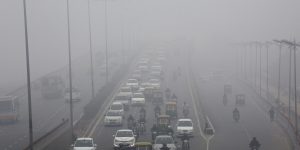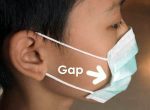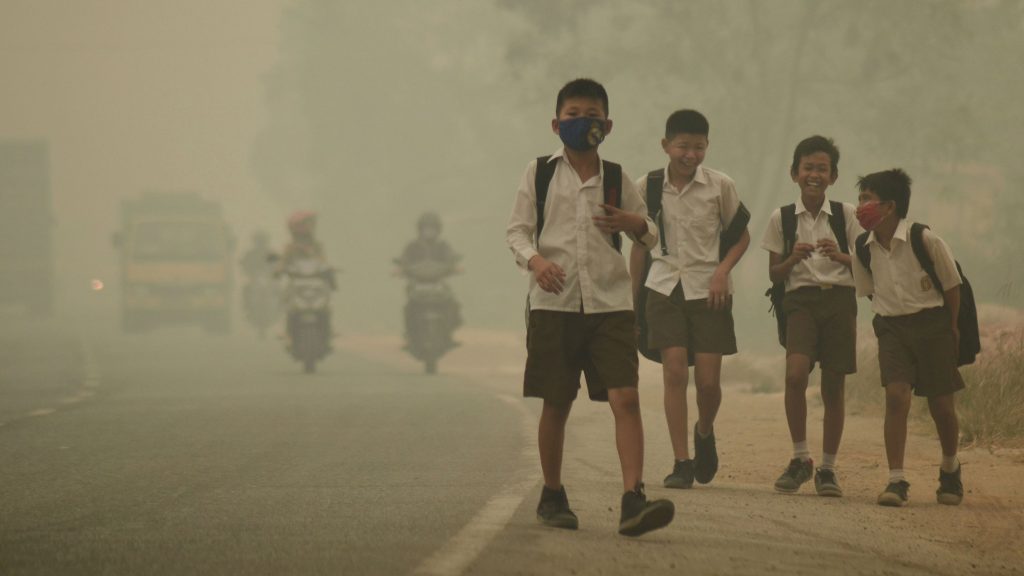Air pollution in the national capital has surpassed the dangerous levels. The air that we breathe has been loaded with various toxic gases and particulate matter. With the degrading quality of air, the masks have become imperative for one for protection from the air pollution. Besides a protective gadget, it has become a fashion trend too. Even the timeless Bollywood superstar Amitabh Bachchan, in the recent movie ‘Pink’, was seen wearing a mask to curb the effects of pollution in Delhi.
Well, with the present conditions no mask can purify the air that we breathe completely, but they sure can lessen the pollutants inhaled. But, before you go out and buy any mask, here is some information about the masks being used. Not every mask is right for you. The masks with the right filter type, right filter rating and right fit are some attributes of the mask that you need to keep in mind before buying.
The Air Quality
 The air over the national capital is loaded with dust consisting of crushed brick, dirt, cement etc, the air contains suspended particles like sawdust and pollen grain, gases like Nitrous Oxide, Sulphur Dioxide and Carbon Monoxide are also present in the air. Basically, there are two types of pollutants that you must take into account while choosing the right mask – Particulate pollutants and Vapour pollutants.
The air over the national capital is loaded with dust consisting of crushed brick, dirt, cement etc, the air contains suspended particles like sawdust and pollen grain, gases like Nitrous Oxide, Sulphur Dioxide and Carbon Monoxide are also present in the air. Basically, there are two types of pollutants that you must take into account while choosing the right mask – Particulate pollutants and Vapour pollutants.
Filter type
The filter types are ‘N’, ‘R’ or ‘P’.
N-type filters – These work against the particulate matter and aerosols (non-oily in nature). These remove dust particles like minute particles of iron ore, coal pollen etc. They cannot filter the vapour pollutants, though.
R-type filters – These are effective for the particulate matter as well as the oil-based aerosols but not useful for vapor pollutants. They can be used for a short span and need to be replaced after 8 hours of use.
P-type filters – They are the most effective and provide protection against oily and non-oily aerosols. They also do not provide protection from the deadly vapour pollutants.
Filter with activated charcoal – Usually the above type of filters are supplemented with a layer of activated charcoal which helps to absorb the harmful vapour.
Filter efficiency
The efficiency ratings are 95, 99 and 100. Each of the three filters has the following three types of efficiency. A rating of 95 means, that the filter is capable of trapping 95% of the pollutant particles. A filter with a rating of 100 offers the best protection.
Ratings – You should look for the U.S. NIOSH or EU FFP ratings. The ratings and certification are important as they indicate that the mask has been tested and meets the standards to filter out pollutants. The N95, N99 or P100 rating are approved and have certification from the U.S. Centers for Disease Control and Prevention (CDC) National Institute for Occupational Safety and Health (NIOSH).
Mask types.

N95 masks – These can filter up to 95 percent of the harmful PM2.5 particulate matter, which tends to stay longer in the air and is thus more likely to be inhaled. N95 masks are not needed for short exposure, like commuting from home to school or work, travel from bus-stop to shopping mall. N95 masks are also not needed in an indoor environment. N95 masks do provide good protection against particle pollutants as they are at least 95% efficient against fine particles that are about 0.1 – 0.3 microns.
N99 and N100 masks – These are capable of filtering out the PM2.5 airborne particulate matter with up to 99 percent, and 99.97 percent efficiency. However, like the N95 air masks, these are also not resistant to oil and oil-based pollutants.
P95 masks – These can filter out oil-based pollutants to an extent, which cannot be removed by the N-type. They are a bit expensive.
R95 masks – These masks filter out the oil-based pollutants. These can be used for only eight hours, and are pretty expensive, and not meant for daily or regular usage.
Other Attributes
Other than the filter type one should pay heed to these attributes too:
 The Fit – The masks work only if there is a good fit with the face of the wearer. Make sure the mask fits securely and that there are no gaps left. The gap completely negates any benefit or protection you would get from filtering out pollutant particles. This is one of the biggest reasons why surgical masks are useless.
The Fit – The masks work only if there is a good fit with the face of the wearer. Make sure the mask fits securely and that there are no gaps left. The gap completely negates any benefit or protection you would get from filtering out pollutant particles. This is one of the biggest reasons why surgical masks are useless.
Ventilation – Make sure your mask is well ventilated. The use of masks increases effort in breathing and may cause discomfort in breathing, tiredness headache. If the discomfort is too much to bear, one should discontinue the use. or
Companies
Vogmask, Honeywell, Totobobo, and Respro are some of the popular brands that sell masks. The price ranges from 200 – 10,000 INR.
The masks do provide some protection but seeing the current situation of Delhi, even these masks are not of much use. However, a little protection is always better than no protection at all.
